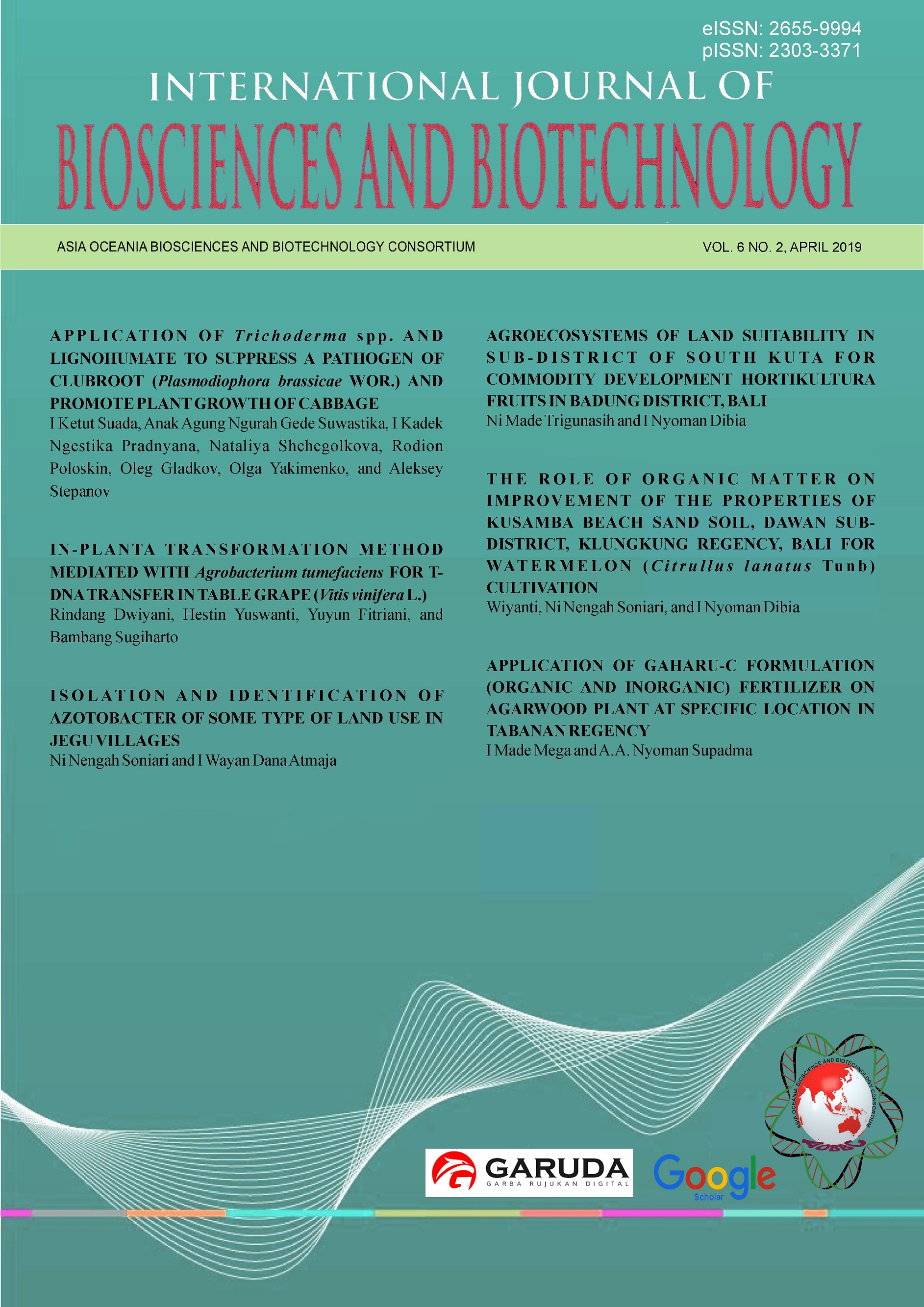IN-PLANTA TRANSFORMATION METHOD MEDIATED WITH Agrobacterium tumefaciens FOR T-DNA TRANSFER IN TABLE GRAPE (Vitis vinifera L.)
Abstract
The aim of the research is to investigate a simple method of in planta transformation method for T-DNA transfer in table grape. The T-DNA harbored the S0SPS1 gene under the control of promoter of the 35S CaMV from the Cauliflower Mosaic Virus and contained the NPTII gene, a kanamycin-resistant gene as a selectable marker for transformant selection. Six-month plants originated from cuttings were used as target plants. We explored two methods of in planta transformation, namely ”dipping” and “sweeping”. For both methods, the leaves of the target plants were removed and those of shoots without leaves were used as the target of transformation. In the “dipping method”, those shoots were dipped with the agrobacterial suspension for 60 seconds. However, for the “sweeping method”, the scars (the spots where leaves were removed) were swept with agrobacterial suspension using a cotton bud. Those treated non-leafy-shoots (from both methods) then were grown to be leafy shoots. Those leafy shoots then were cut and transplanted into the soil and grown to be a whole plant. The leaves of those plants then were taken as samples for DNA extraction and PCR using primers of NPTII gene (Forward: 5’-GTCATCTCACCTTCCTCCTGCC-3’; Reverse: 5’ GTCGCTTGGTCGGTCATTTCG-3’) with expected amplified band of 550 bp. We found that only the “sweeping method” plants amplified the 550 bp bands, while those of the “dipping method” did not. We suggest that the T-DNA was successfully integrated into the genome of plants treated with the “sweeping method” but not with the “dipping method”. Leaf sugar content (oBrix) of PCR-positive vines was higher than those of the wild-type vines, ensuring the integration of the T-DNA into the plant genome.






